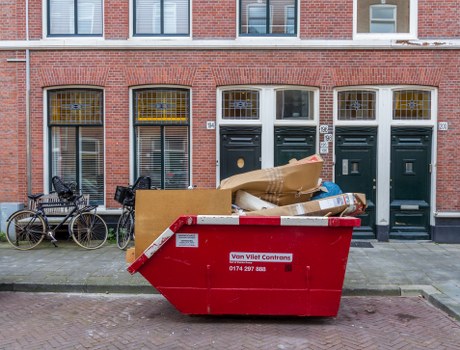Understanding Flat Clearance Bow: A Comprehensive Guide

Flat Clearance Bow is an essential concept in various fields, including engineering, construction, and transportation. Understanding the nuances of flat clearance bow ensures safety, efficiency, and compliance with regulations. This article delves into the intricacies of flat clearance bow, exploring its significance, applications, and the factors influencing its implementation.
Flat clearance bow refers to the minimum horizontal space required between obstacles and a bow-shaped structure to ensure unobstructed movement or passage. This concept is particularly vital in areas where space is limited, and precise measurements are crucial for operational effectiveness.
In the context of transportation, flat clearance bow plays a critical role in the design of roads, bridges, and tunnels. Proper clearance ensures that vehicles of various sizes can pass safely without risking contact with structures or other vehicles. It also impacts the design and placement of signage, barriers, and other roadside elements.

##### Importance of Flat Clearance Bow
Flat clearance bow is pivotal for several reasons:
- Safety: Adequate clearance prevents accidents caused by collisions with overhead structures.
- Efficiency: Ensures smooth traffic flow by accommodating vehicles of different sizes without delays.
- Compliance: Adheres to legal standards and safety regulations set by authorities.
- Design Optimization: Facilitates the creation of functional and aesthetically pleasing infrastructure.
Understanding the optimal flat clearance bow can significantly reduce the risk of accidents and improve overall transportation system efficiency.
Moreover, proper clearance is essential in urban planning, where space is at a premium, and infrastructure must coexist harmoniously with existing buildings and public spaces.

##### Factors Influencing Flat Clearance Bow
Several factors determine the appropriate flat clearance bow, including:
- Vehicle Dimensions: The size and type of vehicles that will use the space.
- Environmental Conditions: Weather patterns, such as wind and precipitation, can affect structural stability.
- Usage Frequency: High-traffic areas may require greater clearance to accommodate constant movement.
- Structural Design: The shape and materials used in the construction of the bow.
By considering these factors, engineers and planners can design structures that are both safe and functional.
Additionally, future growth and changes in transportation technology need to be anticipated to ensure long-term viability of the clearance standards.

##### Applications of Flat Clearance Bow
Flat clearance bow finds applications in various sectors:
- Road Construction: Designing roads and highways with appropriate clearance to accommodate all vehicle types.
- Railway Systems: Ensuring trains pass safely under bridges and through tunnels.
- Aerospace: Managing clearances in airport runways and overpasses.
- Urban Planning: Integrating infrastructure seamlessly within city landscapes.
Each application requires a tailored approach to flat clearance bow to meet specific needs and challenges.
For instance, railway systems may require higher clearance due to longer and bulkier trains compared to regular road traffic.

##### Calculating Flat Clearance Bow
Accurate calculation of flat clearance bow involves several steps:
- Measurement: Determining the dimensions of the space and the structures involved.
- Assessment: Evaluating the types of vehicles or objects that will navigate the area.
- Regulatory Compliance: Ensuring calculations meet local and national safety standards.
- Simulation: Using software tools to model and predict clearance needs under various scenarios.
Advanced tools and technologies aid in precise calculations, reducing the margin of error and enhancing safety.
Engineers often collaborate with software developers to create models that can adapt to changing requirements and unforeseen challenges.
##### Challenges in Implementing Flat Clearance Bow
Implementing flat clearance bow comes with challenges, such as:
- Space Constraints: Limited space in urban areas makes it difficult to achieve optimal clearance.
- Budget Limitations: Financial constraints may limit the ability to implement the necessary designs.
- Regulatory Hurdles: Navigating complex regulations can delay projects.
- Technological Limitations: Lack of advanced tools can impede accurate calculations and implementations.
Addressing these challenges requires innovative solutions and effective collaboration among stakeholders.
For instance, leveraging new materials or construction techniques can help overcome space and budget limitations.
##### Innovations in Flat Clearance Bow
Recent advancements have enhanced the effectiveness of flat clearance bow:
- Smart Sensors: Monitoring real-time data to adjust clearance dynamically.
- Modular Designs: Allowing for easy modifications to accommodate changing needs.
- Eco-friendly Materials: Reducing environmental impact while maintaining structural integrity.
- Advanced Simulation Software: Improving accuracy in clearance calculations.
These innovations contribute to more resilient and adaptable infrastructure systems.
Moreover, integrating green technologies ensures sustainability without compromising functionality.
##### Flat Clearance Bow and Sustainability
Sustainability is a growing concern in infrastructure development. Flat clearance bow plays a role by:
- Reducing Material Waste: Precision in design minimizes excess material usage.
- Energy Efficiency: Proper clearance can aid in optimizing traffic flow, reducing fuel consumption.
- Long-term Durability: Sustainable designs ensure structures last longer, decreasing the need for frequent repairs.
Incorporating sustainable practices in flat clearance bow design aligns with global efforts to mitigate environmental impact.
Furthermore, sustainable infrastructure supports economic and social well-being by promoting efficient resource use.
##### Future Trends in Flat Clearance Bow
The future of flat clearance bow is promising, with trends focusing on:
- Automation: Utilizing AI and machine learning for real-time adjustments and monitoring.
- Integration with Smart Cities: Ensuring infrastructure is compatible with connected urban environments.
- Adaptive Designs: Creating structures that can easily adapt to changing needs and technologies.
- Enhanced Collaboration: Multidisciplinary approaches combining engineering, technology, and environmental science.
These trends aim to create more intelligent, responsive, and sustainable infrastructure systems.
As technology evolves, flat clearance bow will continue to adapt, meeting the dynamic demands of modern society.
##### Local Relevance: Nearby Areas to Bow
Flat clearance bow is particularly important in the Bow area and its surroundings. Here are some nearby areas where flat clearance bow plays a crucial role:
- Stratford: Located just north of Bow, Stratford utilizes flat clearance bow in its extensive transport networks, including the Olympic Park and East London Transit.
- Poplar: To the east of Bow, Poplar incorporates flat clearance bow in its redevelopment projects, ensuring smooth traffic flow around key landmarks.
- Hackney Wick: Southwest of Bow, Hackney Wick benefits from precise clearance designs in its industrial and residential infrastructure.
- Stepney: Adjacent to Bow, Stepney's roadways and public spaces rely on flat clearance bow to manage high-density traffic.
- Canary Wharf: East of Bow, the financial district implements flat clearance bow in its high-rise buildings and transportation hubs.
- Bethnal Green: Northwest of Bow, Bethnal Green uses flat clearance bow in its historic and modern constructions.
- Dalston: Another nearby area, Dalston, integrates flat clearance bow in its vibrant urban landscape to support local businesses and traffic.
- Leyton: Northeast of Bow, Leyton employs flat clearance bow in its community facilities and road designs.
- Forest Gate: Surrounding Bow to the east, Forest Gate uses flat clearance bow in its diverse infrastructure projects.
- Homerton: West of Bow, Homerton benefits from flat clearance bow in its educational institutions and transport systems.
Each of these areas leverages flat clearance bow to enhance their infrastructure, ensuring safety and efficiency for residents and visitors alike.
Understanding the unique features of each nearby area helps in tailoring flat clearance bow implementations to meet specific local needs.
##### Conclusion
Flat clearance bow is a fundamental aspect of infrastructure design that ensures safety, efficiency, and compliance across various sectors. Its applications in transportation, urban planning, and construction highlight its significance in modern society.
By considering factors such as vehicle dimensions, environmental conditions, and technological advancements, flat clearance bow can be effectively implemented to meet diverse needs. Innovations and sustainable practices further enhance its relevance, making it a critical component in the development of resilient and adaptable infrastructure systems.
In areas like Bow and its neighboring regions, the careful application of flat clearance bow contributes to the seamless operation of transport networks and the harmonious integration of infrastructure within urban landscapes.
As we move towards more connected and smart cities, the role of flat clearance bow will continue to evolve, supporting the dynamic demands of modern life while prioritizing safety and efficiency.
Frequently Asked Questions
1. What is flat clearance bow?
Flat clearance bow refers to the minimum horizontal space required between obstacles and a bow-shaped structure to ensure unobstructed movement or passage.
2. Why is flat clearance bow important?
It ensures safety by preventing accidents, improves traffic flow efficiency, complies with safety regulations, and optimizes infrastructure design.
3. How is flat clearance bow calculated?
It involves measuring the dimensions of the space and structures, assessing the types of vehicles or objects, ensuring compliance with regulations, and using simulation tools for accurate predictions.
4. What challenges exist in implementing flat clearance bow?
Challenges include space constraints in urban areas, budget limitations, complex regulatory requirements, and technological limitations in accurate calculations.
5. How does flat clearance bow contribute to sustainability?
It reduces material waste through precise design, enhances energy efficiency by optimizing traffic flow, and ensures long-term durability of structures, thereby supporting sustainable infrastructure development.
